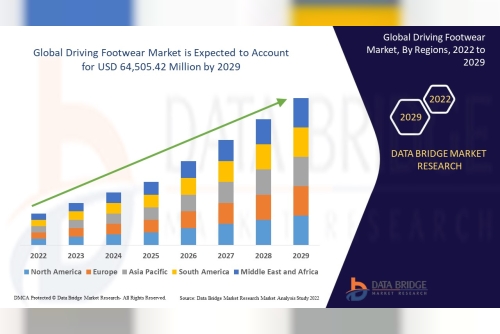Introduction to Revenue Cycle Management in the USA
Ever wonder how doctors get paid after you leave their office? That’s where Revenue Cycle Management in USA steps in. It’s the invisible engine behind every healthcare provider’s financial system quietly ensuring payments flow smoothly from patients and insurers to medical offices and hospitals.
Let’s dive into the world of RCM and explore how it's transforming U.S. healthcare, especially in 2025.
What Is Revenue Cycle Management (RCM)?
In simple terms, RCM is the process of tracking patient care from registration to final payment. It includes everything from verifying insurance to billing and collecting payments.
Think of it like a full-service checkout system—but for healthcare. It ensures that providers get paid correctly and quickly for the services they deliver.
Importance of RCM in the Healthcare System
RCM isn't just about collecting money. It’s essential for:
Keeping healthcare providers financially healthy Reducing billing errors and payment delays Helping patients understand and manage their medical billsWithout an efficient RCM system, hospitals could lose millions in revenue—and patients would face more billing confusion than ever.
The Growing Demand for RCM Services
With healthcare regulations constantly changing and billing becoming more complex, many U.S. providers are turning to RCM service providers like MyBillingProvider.com to manage the heavy lifting.
RCM outsourcing is booming. Why? Because it’s cost-effective, efficient, and reduces administrative headaches.
Components of Revenue Cycle Management
Let’s break down the RCM process into digestible parts.
Patient Registration and Insurance Verification
This is the very first step. Get it wrong, and the whole process falls apart. It involves:
Capturing patient demographics Verifying insurance coverage Collecting co-pays upfrontMedical Coding and Charge Capture
Every diagnosis and procedure has a specific code. Medical coders translate healthcare services into standardized codes for billing. Accurate coding is crucial to avoid denials.
Claims Submission and Denial Management
Once coded, claims are submitted to insurance providers. If a claim is rejected, denial management teams jump in to resolve it quickly.
Payment Posting and Patient Billing
After the insurer pays, payments are posted to the patient account. Any remaining balance? That’s billed directly to the patient.
Reporting and Analytics
Smart RCM uses data to drive decisions. Reports help identify patterns, improve collections, and optimize the entire process.
The RCM Process: Step-by-Step Breakdown
Pre-Visit Processes
Appointment Scheduling
It all starts with booking. Scheduling software ensures slots are filled and patients are prepped.
Insurance Eligibility Check
Before a patient even shows up, verifying their insurance avoids future surprises.
During the Visit
Documentation and Coding Accuracy
Providers must document the visit accurately, which coders use to bill correctly.
Post-Visit Processes
Claims Creation and Submission
Billing software compiles all data and submits claims electronically.
Follow-Up and Payment Collection
If payments are delayed, follow-up teams contact insurers or patients for resolution.
Challenges in Revenue Cycle Management
RCM isn’t without its hurdles.
Insurance Denials and Rejections
Payers reject claims for various reasons—missing data, incorrect codes, or eligibility issues. These slow down revenue and increase workloads.
Compliance and Regulatory Issues
HIPAA, Medicare, Medicaid navigating the maze of rules is no joke. One mistake can mean fines or legal issues.
Patient Financial Responsibility and Collection Issues
As more costs shift to patients, collecting from them has become harder. Many delay or avoid payments, impacting revenue.
Technology’s Role in Modern RCM
Goodbye spreadsheets. Hello automation.
AI and Automation in RCM
Artificial Intelligence is a game-changer:
Predicting claim denials Auto-coding procedures Enhancing payment forecastingIntegration with Electronic Health Records (EHRs)
Modern RCM systems sync with EHRs, eliminating double data entry and reducing errors.
The Rise of Cloud-Based RCM Platforms
Cloud tech allows secure, real-time access from anywhere. It’s ideal for multi-location healthcare providers.
Choosing the Right RCM Partner
Not all RCM vendors are created equal.
Key Factors to Consider
When choosing an RCM partner, look for:
Transparency in pricing Compliance with U.S. regulations Proven track record and testimonials Real-time reporting dashboardsWhy U.S. Healthcare Providers Trust MyBillingProvider.com
They combine human expertise with smart automation to handle the full revenue cycle—ensuring you get paid faster, with fewer headaches. Their team understands the U.S. healthcare landscape inside and out.
Future Trends in Revenue Cycle Management
What does the future look like? Think smarter, faster, more personalized.
Predictive Analytics for Financial Forecasting
Using past data to predict future cash flow? Yes, it’s already happening—and it’s changing how providers manage revenue.
Personalized Billing and Transparency
Patients now expect itemized, understandable bills—just like online shopping invoices.
Value-Based Care and its Impact on RCM
With a shift from volume to value, RCM must adapt to new payment models that focus on patient outcomes rather than just services provided.
Conclusion
Revenue Cycle Management in USA isn’t just a back-office function—it’s a strategic asset. With rising costs, tighter regulations, and evolving patient expectations, getting RCM right is more important than ever.
Whether you're a solo practitioner or a hospital system, the key to a healthy bottom line starts with mastering your revenue cycle. And if that sounds overwhelming, partnering with a trusted RCM provider like MyBillingProvider.com could be your best move in 2025 and beyond.












